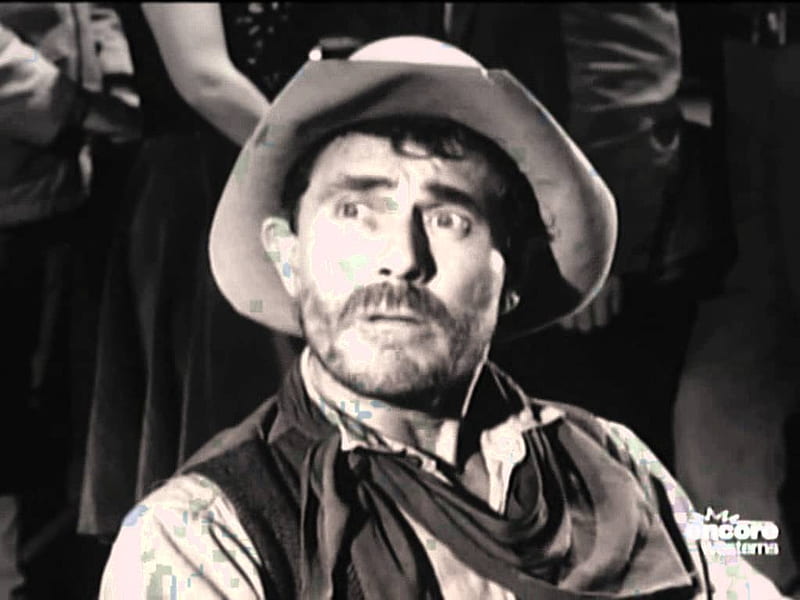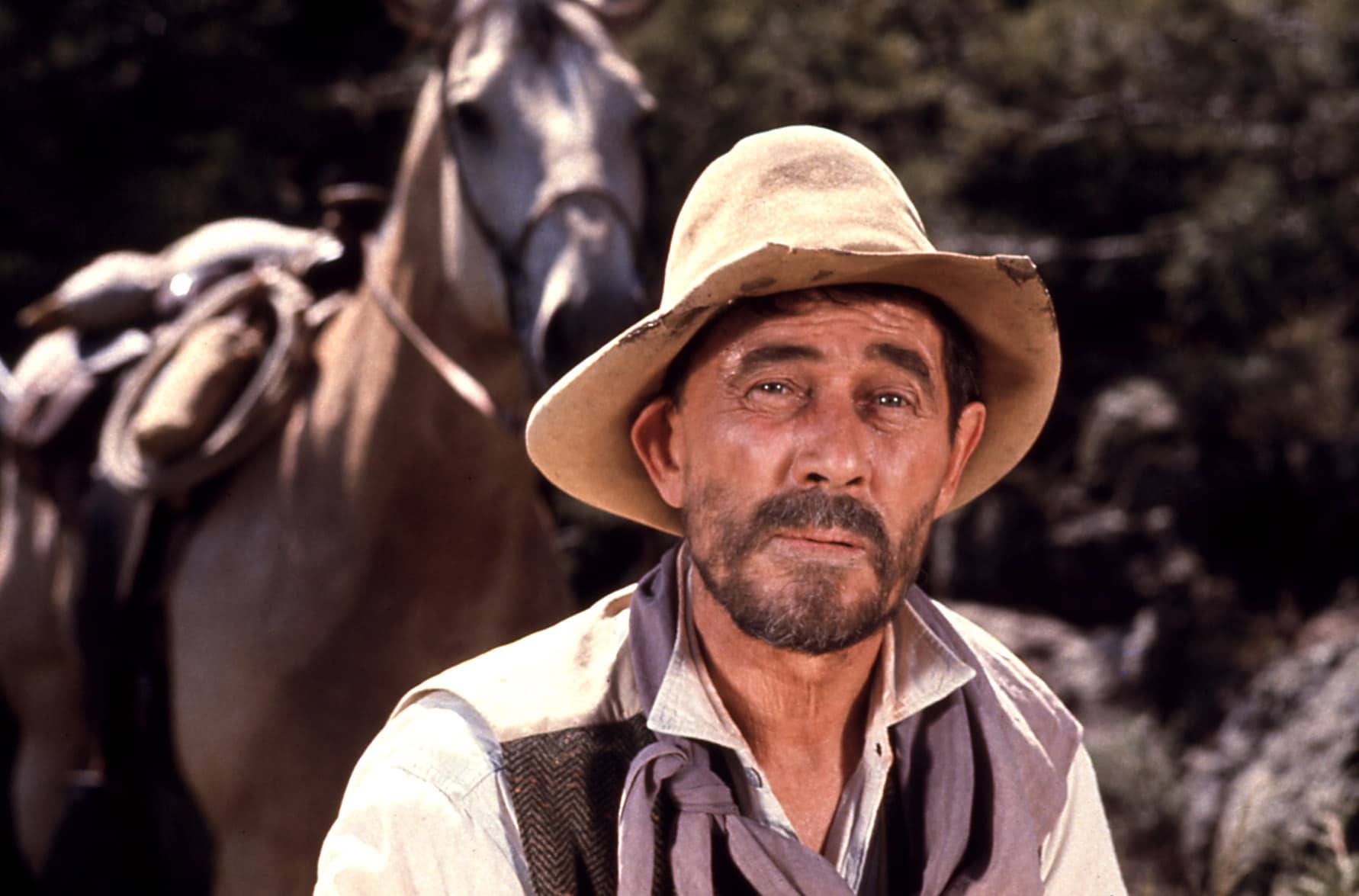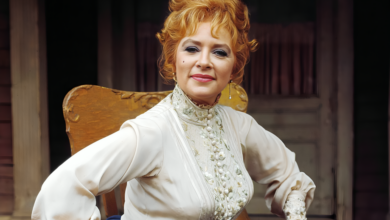Ken Curtis A Life in Western Cinema

Ken Curtis, a name that resonates with fans of Western cinema and television, left an indelible mark on the entertainment industry. His portrayal of Festus Haggen in the long-running TV series “Gunsmoke” cemented his place in the pantheon of Western icons. However, Curtis’s career was far more diverse and accomplished than many realize. This blog post delves into the life, career, and lasting impact of Ken Curtis, exploring his journey from a small-town boy to a beloved figure in American popular culture.
The Legacy of Ken Curtis: Beyond ‘Gunsmoke’

Early Life and Musical Beginnings
Ken Curtis was born Curtis Wain Gates on July 2, 1916, in Lamar, Colorado. Growing up in the heart of the American West, Curtis was exposed to the landscapes and lifestyle that would later define his acting career. His early years were spent in Las Animas, Colorado, where his father served as the sheriff. This upbringing instilled in him a deep appreciation for the culture and values of the Old West.
Curtis’s initial foray into the entertainment world was not through acting, but through music. He possessed a rich baritone voice that would serve him well throughout his career. In the late 1930s, he began singing with big bands, including the Tommy Dorsey Orchestra. This musical background would prove invaluable in his later acting roles, allowing him to bring an added dimension to his characters.
The transition from music to acting was a gradual one for Curtis. His vocal talents caught the attention of film producers, leading to small roles in musical westerns. These early experiences in front of the camera laid the foundation for what would become a prolific acting career.
Transition to Acting and Early Roles

Curtis’s acting career began in earnest in the 1940s. His early roles were often small parts in B-westerns, where he could showcase both his acting abilities and his singing voice. One of his first notable appearances was in the 1945 film “Rhythm Round-Up,” where he played a singing cowboy. This role type was popular at the time and allowed Curtis to blend his musical talents with his growing acting skills.
As he gained more experience, Curtis began to land larger roles in more prominent productions. He appeared in several John Ford films, including “The Quiet Man” (1952) and “The Searchers” (1956). These collaborations with Ford, one of the most respected directors in Hollywood, helped to establish Curtis as a serious actor capable of holding his own alongside industry veterans.
The Impact of ‘Gunsmoke’ on Curtis’s Career
While Curtis had already built a respectable career in film, it was his role on the television series “Gunsmoke” that would define him for generations of viewers. Curtis joined the cast in 1964 as Festus Haggen, replacing Dennis Weaver’s character Chester Goode. Festus quickly became a fan favorite, known for his distinctive accent, quirky mannerisms, and loyal friendship with Marshal Matt Dillon.
Curtis’s portrayal of Festus was so convincing that many viewers believed he was simply playing himself. In reality, the character was a carefully crafted creation, showcasing Curtis’s considerable acting talents. Festus allowed Curtis to display his range as an actor, blending comedy and drama in a way that endeared him to audiences for over a decade.
The success of “Gunsmoke” and the popularity of Festus catapulted Curtis to a new level of fame. He became a household name, recognized not just by Western enthusiasts but by television viewers across America. This role would open doors for Curtis, leading to guest appearances on other shows and continued work in film long after “Gunsmoke” ended its run.
Ken Curtis: A Western Icon’s Early Career and Rise to Fame

From Singer to Screen: Curtis’s Hollywood Beginnings
Ken Curtis’s journey to Hollywood stardom was not a straightforward path. His initial success as a singer with big bands provided him with valuable experience in the entertainment industry. This musical background would prove to be a significant asset as he transitioned into film. In the early 1940s, Hollywood was producing a large number of musical westerns, and Curtis’s combination of singing ability and rugged good looks made him an ideal candidate for these productions.
His first film appearances were often uncredited or in minor roles, but they allowed him to learn the craft of acting on camera. Curtis’s natural charisma and authentic Western demeanor quickly caught the eye of directors and producers. As he gained more experience, he began to land larger roles in B-westerns, which were popular at the time. These films, while not always critically acclaimed, provided Curtis with ample opportunity to hone his skills and develop his on-screen persona.
Collaboration with John Ford: A Turning Point
One of the most significant developments in Curtis’s early career was his association with legendary director John Ford. Ford, known for his masterful westerns and keen eye for talent, saw potential in the young actor. Curtis’s first major role in a Ford production came in the 1950 film “Rio Grande,” starring John Wayne. While his part was relatively small, it marked the beginning of a fruitful collaboration that would span several years.
Curtis went on to appear in several more Ford films, including “The Quiet Man” (1952), “The Long Gray Line” (1955), and “The Searchers” (1956). These roles, while varied, allowed Curtis to work alongside some of Hollywood’s biggest stars and learn from one of the industry’s most respected directors. The experience he gained working with Ford was invaluable, helping to shape his acting style and deepen his understanding of the Western genre.

Breakthrough Roles and Growing Recognition
As Curtis continued to work in both film and television throughout the 1950s, he began to gain more recognition for his talent. His roles became more substantial, and he started to develop a reputation as a reliable and versatile actor. One of his most notable roles during this period was in the 1956 film “The Conqueror,” where he played the brother of John Wayne’s Genghis Khan. While the film was not well-received critically, it demonstrated Curtis’s ability to take on diverse and challenging roles.
In television, Curtis made guest appearances on popular Western series such as “Wagon Train” and “Have Gun – Will Travel.” These appearances helped to increase his visibility and establish him as a familiar face in the genre. His growing reputation as a skilled character actor set the stage for what would become his most famous role.
The Road to ‘Gunsmoke’: Curtis’s Career-Defining Opportunity
In 1964, Curtis was offered the role that would change his career forever. “Gunsmoke,” already a successful television series, was looking for a new character to replace Dennis Weaver’s departing Chester Goode. Curtis was cast as Festus Haggen, a rough-around-the-edges deputy with a heart of gold. The character was initially intended to be a temporary addition, but Curtis’s portrayal was so well-received that Festus became a permanent fixture on the show.
Curtis’s interpretation of Festus was a masterclass in character acting. He developed a unique accent and mannerisms that made Festus instantly recognizable and lovable to audiences. The character’s relationship with James Arness’s Marshal Matt Dillon became one of the show’s central dynamics, providing both comedy and heart to the long-running series.
The success of Festus catapulted Curtis to a new level of fame. He became one of the most recognizable faces on television, and his portrayal earned him widespread acclaim. Curtis’s work on “Gunsmoke” would define the latter part of his career and secure his place in the pantheon of Western icons.
The Enduring Popularity of Ken Curtis’s Characters

Festus Haggen: A Cultural Phenomenon
Ken Curtis’s portrayal of Festus Haggen on “Gunsmoke” went beyond mere popularity; it became a cultural phenomenon. Festus was more than just a sidekick to Marshal Matt Dillon; he was a fully realized character with his own quirks, backstory, and fan following. Curtis’s ability to bring depth and humor to Festus made the character stand out in a show already filled with memorable personalities.
Festus’s distinctive dialect, a creation of Curtis himself, became one of the character’s most recognizable traits. The way Festus spoke, with his unique turns of phrase and colorful expressions, was often imitated by fans and even other actors. This dialect, combined with Festus’s unwavering loyalty, quick wit, and occasional bumbling, created a character that was both entertaining and endearing.
The popularity of Festus extended beyond the show’s original run. In syndication, new generations of viewers discovered and fell in love with the character. Festus became a symbol of the classic Western era, representing the spirit of the Old West with his rugged charm and simple wisdom.
Other Memorable Roles and Their Impact
While Festus Haggen remains Curtis’s most famous role, his career was filled with other memorable characters that left their mark on audiences. In John Ford’s “The Searchers,” Curtis played Charlie McCorry, a young man vying for the affections of Vera Miles’s character. This role showcased Curtis’s ability to hold his own in a cast that included John Wayne and Jeffrey Hunter.
In the 1958 film “The Vikings,” Curtis demonstrated his versatility by playing Egbert, a character far removed from his usual Western roles. This performance helped to establish Curtis as an actor capable of taking on diverse parts across different genres.
On television, Curtis made guest appearances on numerous shows, often playing variations of the Western characters he had become known for. These appearances, while sometimes brief, always left an impression on viewers and further cemented his status as a Western icon.
The Lasting Appeal of Curtis’s On-Screen Personas
The characters portrayed by Ken Curtis continue to resonate with audiences decades after their initial appearances. This enduring appeal can be attributed to several factors. Firstly, Curtis had an innate understanding of the Western genre and the types of characters that populated these stories. He brought authenticity to his roles, drawing on his own experiences growing up in the West.
Secondly, Curtis had a remarkable ability to infuse his characters with humor and heart. Whether playing a gruff deputy or a singing cowboy, he found ways to make his characters relatable and likable. This skill allowed audiences to form strong connections with his on-screen personas, leading to lasting memories and continued appreciation.
Lastly, Curtis’s characters often embodied values that many viewers admired and aspired to embody themselves. Loyalty, honesty, and a strong work ethic were common traits in his portrayals. These qualities, combined with the nostalgic appeal of the Western genre, have helped to keep Curtis’s characters relevant and beloved by new generations of fans.
Ken Curtis: From ‘Gunsmoke’ to the Big Screen

Curtis’s Film Career During ‘Gunsmoke’
While Ken Curtis is best known for his role as Festus Haggen on “Gunsmoke,” his film career continued to thrive during his time on the show. The popularity of “Gunsmoke” actually opened up new opportunities for Curtis in the film industry. Studios were eager to capitalize on his increased fame, leading to more substantial roles in feature films.
One notable film from this period was “Charro!” (1969), starring Elvis Presley. Curtis played the role of Nesbitt, showcasing his ability to hold his own alongside one of the biggest stars of the era. This film allowed Curtis to display a different side of his acting abilities, playing a character quite different from the affable Festus.
Curtis also appeared in several Western films during his “Gunsmoke” years, including “Arizona Bushwhackers” (1968) and “Sergeant Deadhead” (1965). These roles allowed him to continue exploring the Western genre while bringing elements of his television persona to the big screen.
Transition to Character Actor in Films
As Curtis aged and “Gunsmoke” came to an end, he successfully transitioned into a respected character actor in films. His years of experience and the credibility he had built in the Western genre made him a valuable addition to many productions. Curtis had the ability to bring depth and authenticity to even small roles, often stealing scenes with his charismatic performances.
One of his most memorable post-“Gunsmoke” film roles was in the 1980 Western comedy “The Long Riders.” Curtis played the father of the Younger brothers, holding his own in a cast that included several sets of real-life brothers playing historical figures. This role demonstrated Curtis’s ability to adapt to changing trends in Western films, as “The Long Riders” took a more revisionist approach to the genre.
Curtis’s Contributions to Non-Western Films
While Ken Curtis will always be associated with Westerns, his talents extended to other genres as well. Throughout his career, he appeared in a variety of films that showcased his versatility as an actor. In the 1977 horror film “Kingdom of the Spiders,” Curtis played a small-town veterinarian alongside William Shatner, proving he could bring his folksy charm to even the most unexpected settings.
Curtis also lent his voice to several animated productions, including the 1973 film “Robin Hood,” where he voiced Nutsy, one of the vultures. This work demonstrated Curtis’s ability to create memorable characters even when relying solely on his vocal talents.
These diverse roles helped to round out Curtis’s filmography and cement his status as a versatile character actor capable of excelling in any genre.
Behind the Scenes with Ken Curtis: Personal Stories and Anecdotes

Life on the Set of ‘Gunsmoke’
Ken Curtis’s time on “Gunsmoke” was filled with memorable moments and lasting friendships. The cast and crew of the long-running series became like a family, with Curtis often speaking fondly of his co-stars in interviews. He particularly enjoyed working with James Arness, who played Marshal Matt Dillon. The two developed a close friendship that extended beyond the set, often going hunting together during breaks in filming.
Curtis was known for his professionalism and dedication to his craft. He would often arrive on set early to perfect Festus’s distinctive accent and mannerisms. This commitment to his character impressed both his co-stars and the show’s producers, contributing to Festus’s evolution from a guest character to a central figure in the series.
One famous anecdote from the set involves Curtis’s first appearance as Festus. The character was initially intended to be a one-off guest role, but Curtis’s performance was so well-received that the producers immediately began writing him into more episodes. Curtis himself was surprised by the positive reaction, having initially worried that his portrayal might be too over-the-top.
Curtis’s Relationships with Co-stars and Crew
Throughout his career, Ken Curtis was known for his affable personality and ability to get along with everyone on set. His co-stars on “Gunsmoke” often spoke of his sense of humor and willingness to help fellow actors. Amanda Blake, who played Miss Kitty on the show, once remarked that Curtis had a knack for lightening the mood during long, difficult shoots.
Curtis’s relationship with director John Ford was particularly significant. Ford was known for his tough, sometimes abrasive directing style, but he and Curtis developed a mutual respect and understanding. Curtis often credited Ford with teaching him valuable lessons about acting and the film industry.
In his film work, Curtis was equally well-liked. Many of his co-stars commented on his professionalism and his ability to elevate scenes with his presence. John Wayne, with whom Curtis worked on several occasions, praised his ability to bring authenticity to Western roles.
Curtis’s Approach to Acting and Character Development
Ken Curtis had a unique approach to developing his characters, particularly Festus Haggen. He drew inspiration from people he had known growing up in Colorado, incorporating elements of their speech patterns and mannerisms into his performance. Curtis was also known to spend time developing backstories for his characters, even if these details were never explicitly mentioned on screen.
For Festus, Curtis created an entire family history, including details about the character’s upbringing and relatives. This deep understanding of Festus’s background allowed Curtis to react naturally in scenes, bringing a level of consistency and believability to the character over the course of many years.
Curtis was also known for his willingness to improvise and suggest changes to scripts. Many of Festus’s most memorable lines and moments were the result of Curtis’s own additions or alterations. This collaborative approach endeared him to writers and directors, who came to trust his instincts about his character.
Ken Curtis’s Influence on the Western Genre
Redefining the Sidekick Role in Westerns
Ken Curtis’s portrayal of Festus Haggen on “Gunsmoke” played a significant role in redefining the concept of the sidekick in Western narratives. Traditionally, sidekicks in Westerns were often one-dimensional characters, serving primarily as comic relief or to highlight the hero’s abilities. Curtis’s Festus, however, was a fully realized character with his own strengths, flaws, and story arcs.
Festus was more than just Marshal Dillon’s deputy; he was a crucial part of the show’s ensemble, often driving plotlines and even taking center stage in some episodes. This elevation of the sidekick role influenced other Western series and films, encouraging writers and producers to develop more complex supporting characters.
Curtis’s performance demonstrated that a sidekick could be both funny and capable, loyal yet independent. This nuanced approach to the role set a new standard in the genre, influencing how sidekicks were written and portrayed in subsequent Western productions.
Curtis’s Impact on Western Dialects and Characterization
One of Ken Curtis’s most lasting contributions to the Western genre was his approach to dialect and characterization. The unique way of speaking that Curtis developed for Festus became iconic, inspiring countless imitations and parodies. More importantly, it demonstrated the power of distinctive speech patterns in creating memorable Western characters.
Curtis’s attention to linguistic detail went beyond mere accent; he incorporated regional colloquialisms and crafted unique turns of phrase that became associated with Festus. This approach to character voice influenced other actors and writers in the genre, encouraging more diverse and authentic representations of Western speech patterns.
Furthermore, Curtis’s commitment to authenticity extended to his portrayal of Western life and culture. He immersed himself in research about the American West, studying everything from historical accounts to cowboy poetry. This dedication to understanding the world in which his characters lived added depth and richness to his performances, helping to transport audiences to a bygone era.
Legacy of Ken Curtis in Western Filmmaking
Ken Curtis’s impact on the Western genre extends far beyond his time on “Gunsmoke.” His work both in front of the camera and behind the scenes helped shape the way Western stories were told in film and television. By bringing nuance and complexity to his characters, Curtis set a new standard for authenticity and depth in Western narratives.
Curtis’s influence can be seen in the way modern Westerns approach character development and storytelling. The legacy of Festus Haggen lives on in the many sidekick characters who have followed in his footsteps, each striving to capture the same blend of humor, heart, and humanity that Curtis brought to the role.
In addition to his contributions as an actor, Curtis’s work as a singer and musician also left a lasting mark on the Western genre. His performances of traditional Western songs helped preserve a musical heritage that might otherwise have been lost to time. Curtis’s passion for Western music and culture shines through in every note he sang, reminding audiences of the rich tapestry of stories woven into the fabric of the American West.
Celebrating the Life and Career of Ken Curtis

Honoring a Western Legend
Ken Curtis’s legacy as a Western icon is one that continues to resonate with audiences around the world. From his early days as a singer with the Sons of the Pioneers to his unforgettable portrayal of Festus Haggen, Curtis left an indelible mark on the Western genre. His dedication to his craft, his commitment to authenticity, and his ability to bring characters to life have earned him a place of honor in the pantheon of Western legends.
As fans look back on Curtis’s career, they are reminded not only of his talent as an actor and musician but also of his kindness, generosity, and humility. Curtis was known for his warmth and approachability, always taking the time to connect with fans and fellow artists. His impact on those who knew him personally was just as profound as his influence on the Western genre as a whole.
Preserving the Spirit of the American West
In many ways, Ken Curtis embodied the spirit of the American West – rugged, independent, and unapologetically authentic. Through his work on screen and in music, Curtis captured the essence of a bygone era, preserving its stories and traditions for future generations. His commitment to honoring the past while embracing the future serves as a timeless reminder of the enduring appeal of Western storytelling.
As we celebrate the life and career of Ken Curtis, we pay tribute not only to a talented performer but to a true American legend. Curtis’s contributions to Western cinema, music, and culture have left an indelible mark on the landscape of American entertainment, ensuring that his legacy will continue to inspire and captivate audiences for years to come.
Conclusion
In conclusion, Ken Curtis’s life and career stand as a testament to the power of storytelling and the enduring appeal of the Western genre. From his humble beginnings as a singer in Colorado to his iconic portrayal of Festus Haggen on “Gunsmoke,” Curtis brought a rare combination of talent, authenticity, and heart to everything he did.
Through his work on screen, Curtis redefined the role of the sidekick in Western narratives, creating a character in Festus that remains beloved by fans to this day. His dedication to his craft, his commitment to authenticity, and his ability to connect with audiences on a deeply emotional level set him apart as a true master of his art.
As we reflect on the life and legacy of Ken Curtis, we are reminded of the power of storytelling to transcend time and place, to touch hearts and minds, and to preserve the spirit of a bygone era for future generations. Ken Curtis may have ridden off into the sunset, but his legacy continues to shine brightly in the vast expanse of the American West.





